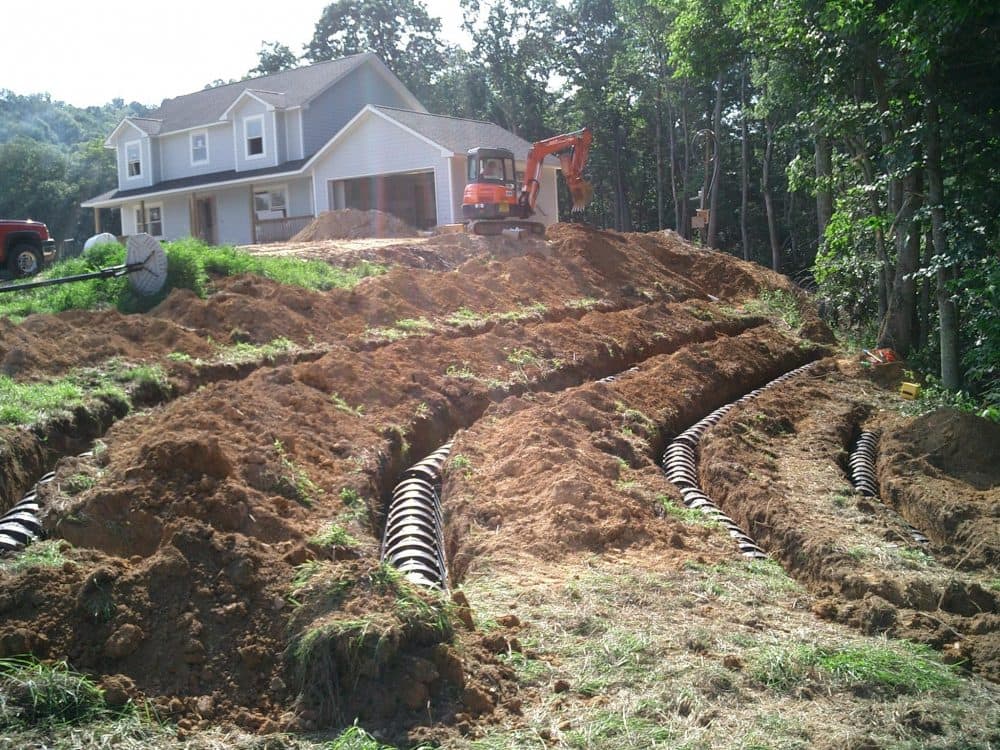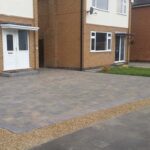Dealing with a waterlogged lawn in Coventry can be frustrating. Excess water can create pools, damage grass, and make your garden look unsightly. Fortunately, you can address this issue effectively with a DIY soakaway system. A soakaway is a simple and cost-effective solution that helps redirect excess water into the soil, preventing flooding and on your waterlogged lawn soakaway.
In this guide, we’ll walk you through how to transform your waterlogged Coventry lawn with a DIY soakaway system that improves drainage and restores the health of your garden.
Why Choose a DIY Soakaway for Your Coventry Lawn?
A DIY soakaway offers several advantages for homeowners in Coventry:
- Cost-Effective: Installing a soakaway yourself can save you money compared to hiring professional contractors.
- Customizable: You can design the soakaway to suit your specific lawn size, layout, and drainage needs.
- Sustainable: Soakaways are environmentally friendly as they help manage stormwater and promote groundwater recharge.
- Low Maintenance: Once installed, a soakaway requires minimal maintenance to keep it working effectively.
Step-by-Step Guide to Building a DIY Soakaway for Your Waterlogged Lawn
Follow these steps to install a DIY soakaway and transform your waterlogged lawn in Coventry.
1. Assess Your Lawn for Waterlogging Issues
The first step is to identify the areas of your lawn that are most affected by waterlogging. Walk around your garden after a rainfall and observe where water tends to collect. These are the areas where your soakaway will be most beneficial.
Key things to look for:
- Low-lying Areas: Water naturally accumulates in depressions or areas with poor grading.
- Slow Draining Soil: If your lawn has clay-heavy soil, it may retain water longer than other types, making it prone to waterlogging.
- Surface Water: Look for areas where water remains on the surface and doesn’t soak into the ground.
2. Plan the Soakaway Location and Size
Once you’ve identified the waterlogged spots, plan the location and size of your soakaway system. Keep the following considerations in mind:
- Avoid Foundations: Position your soakaway at least 5 meters away from buildings or foundations to avoid water seeping into your property.
- Slope: Choose a location that allows water to naturally flow toward the soakaway. Ensure the ground has a slight slope so that water can be directed into the system.
- Size of the Soakaway: The size of the soakaway will depend on the amount of water you need to drain. A general guideline is to have 5 liters of soakaway capacity for every square meter of waterlogged area.
3. Choose the Type of Soakaway
There are a few options for soakaway types, and your choice will depend on the size of your lawn and the severity of the waterlogging:
- Trench Soakaway: Ideal for smaller, localized waterlogging problems. It involves digging a trench and filling it with gravel or stones.
- Pit Soakaway: A deeper pit works well for larger areas or more serious drainage issues. It can hold a larger volume of water and is perfect for gardens with widespread waterlogging.
- French Drain: A trench with a perforated pipe, which can help redirect water to your soakaway more efficiently.
4. Dig the Trench or Pit
The next step is to dig the area where the soakaway will be installed. For a trench soakaway, you’ll need to dig a trench approximately 1 meter deep and 30-40 cm wide. For a pit soakaway, the hole should be about 1 meter in diameter and at least 1 meter deep.
Here are some tips:
- Dig with a Purpose: Ensure that your trench or pit has a slight downward slope toward the soakaway. This will help water flow naturally into the system.
- Remove Debris: Clear the area of any rocks, roots, or debris that could interfere with the water flow.
5. Add Gravel or Stones
Once the trench or pit is dug, the next step is to fill it with gravel or stones. This is the most critical part of the soakaway, as the gravel provides a porous structure that allows water to filter into the ground.
- Gravel Size: Use a mix of gravel sizes. Larger stones should be placed at the bottom of the trench or pit, with smaller stones on top. This ensures optimal water flow and filtration.
- Geotextile Fabric: To prevent soil from entering the soakaway and clogging it, place a geotextile fabric over the gravel. The fabric will keep the gravel in place while still allowing water to pass through.
6. Install a Perforated Pipe (Optional)
For a French drain or if you’re looking to direct water toward the soakaway more effectively, you can install a perforated pipe at the bottom of the trench. The pipe should be placed along the trench, allowing water to flow through the perforations into the gravel.
- Pipe Placement: Ensure the pipe is slightly sloped so that water flows easily toward the soakaway. The perforations should face down to allow water to enter the pipe from the surrounding soil.
7. Cover the Soakaway
Once the trench or pit is filled with gravel and/or pipe, cover the system with a layer of topsoil. This will help restore your lawn’s appearance. You can also lay new turf or grass seed to promote healthy growth.
- Level the Surface: Ensure the topsoil is level with the surrounding lawn, allowing for smooth water flow into the soakaway.
- Grass Restoration: You may need to add new grass seed or sod to help your lawn recover and cover the soakaway.
8. Test Your Soakaway
After the soakaway is complete, test it by applying water to the area or waiting for the next rainfall. Watch how the water drains and ensure that the soakaway is effectively absorbing the water and preventing pooling on the lawn.
If necessary, make adjustments to the size of the soakaway or reposition it to improve water flow. Check the soakaway during subsequent rainfall events to ensure its continued effectiveness.

Maintenance Tips for Your DIY Soakaway
While a soakaway system requires minimal maintenance, here are a few tips to keep it functioning properly:
- Clear Debris: Regularly remove leaves and debris from the surface of the soakaway to prevent blockages.
- Check for Clogs: Periodically check the trench or pit for any blockages caused by soil buildup or compacted gravel.
- Monitor Water Flow: After heavy rain, ensure the soakaway is draining effectively. If water accumulates or drains slowly, it may indicate the need for adjustments.
Benefits of a DIY Soakaway for Your Coventry Lawn
By building a DIY soakaway, you’ll enjoy several benefits:
- Improved Drainage: The soakaway will help your lawn drain excess water quickly, preventing waterlogging.
- Healthier Lawn: Proper drainage improves soil health, preventing root rot and promoting stronger grass growth.
- Cost-Effective Solution: Building your own soakaway can save you the expense of hiring contractors while providing long-term benefits.
Conclusion
A DIY soakaway is an effective and affordable solution to fix waterlogging issues on your Coventry lawn. By following the steps outlined in this guide, you can create a custom soakaway system tailored to your lawn’s needs. With improved drainage, your lawn will stay flood-free and healthy, even after heavy rainfall. So, roll up your sleeves, gather your materials, and transform your waterlogged lawn into a thriving, beautiful garden with a DIY soakaway system.


